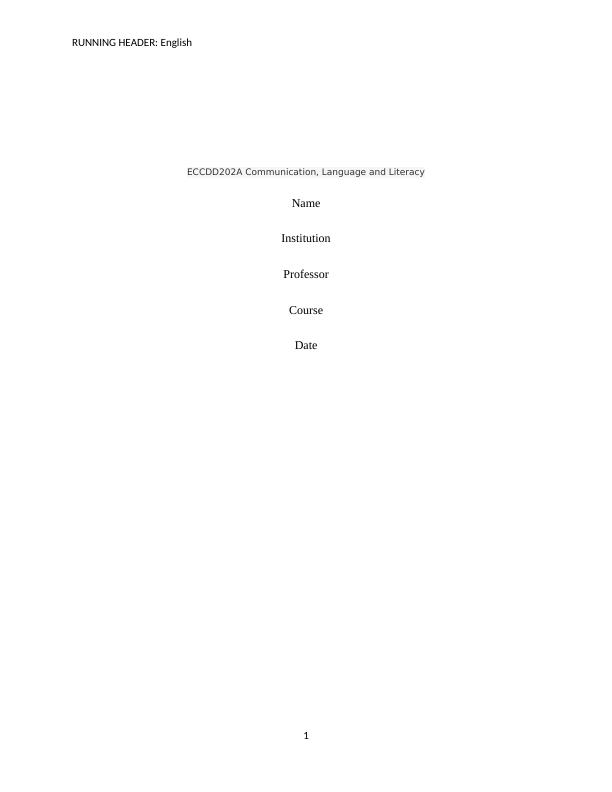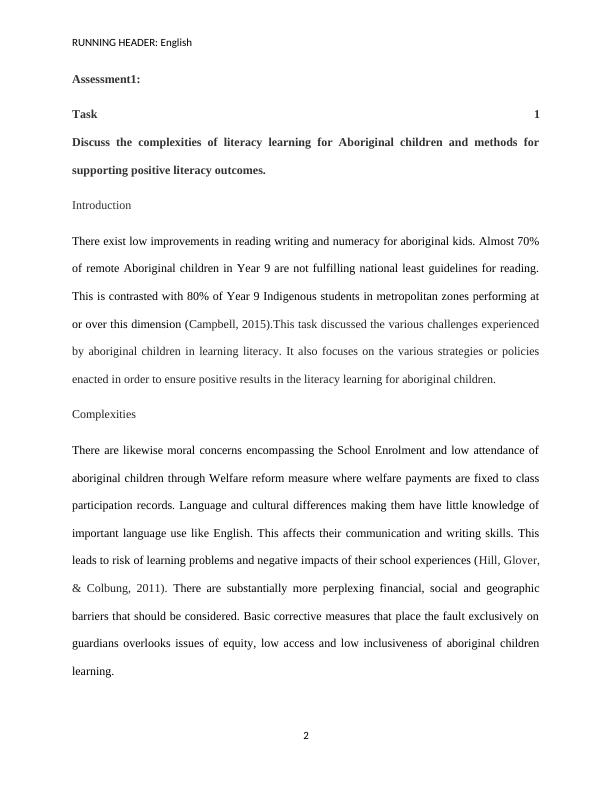Challenges and Strategies for Literacy Learning in Aboriginal Children
10 Pages2164 Words373 Views
Added on 2023-04-25
About This Document
This article discusses the complexities of literacy learning for Aboriginal children and methods for supporting positive literacy outcomes. It also explores the advantages and disadvantages of phonics and whole language approaches to teaching reading and justifies why educators should provide a blended approach and how to facilitate this.
Challenges and Strategies for Literacy Learning in Aboriginal Children
Added on 2023-04-25
ShareRelated Documents
End of preview
Want to access all the pages? Upload your documents or become a member.
Complexities of Literacy Learning for Aboriginal Children and Evaluation of Phonics and Whole Language Approaches to Teaching
|9
|1614
|272
Literacy learning for Aboriginal Children and Phonics Assignment
|7
|1766
|33
Communication, language and literacy
|11
|2347
|126
Advantages and Disadvantages of Phonics and Whole Language Approaches
|9
|1527
|344
Social and Cultural Context of Education
|9
|2281
|38
Indigenous Schooling: Methods, Models, and Content
|7
|398
|300



